Graphene-Tuned, Tightly Coupled Hybrid Plasmonic Meta-Atoms
Abstract
1. Introduction
2. Results and Discussion
2.1. Theory
2.2. Graphene-Tuned TCMAs
2.3. Fabrication and Measurement
3. Conclusions
4. Materials and Methods
4.1. Fabrication
4.2. Graphene Transfer
4.3. Ion Gel Preparation
4.4. THz Characterization
4.5. Simulation
Author Contributions
Funding
Data Availability Statement
Conflicts of Interest
References
- Lee, S.; Baek, S.; Kim, T.T.; Cho, H.; Lee, S.; Kang, J.H.; Min, B. Metamaterials for enhanced optical responses and their application to active control of Terahertz waves. Adv. Mater. 2020, 32, 2000250. [Google Scholar] [CrossRef] [PubMed]
- Meinzer, N.; Barnes, W.L.; Hooper, I.R. Plasmonic meta-atoms and metasurfaces. Nat. Photonics 2014, 8, 889–898. [Google Scholar] [CrossRef]
- Yang, B.; Liu, T.; Guo, H.; Xiao, S.; Zhou, L. High-performance meta-devices based on multilayer meta-atoms: Interplay between the number of layers and phase coverage. Sci. Bull. 2019, 64, 823–835. [Google Scholar] [CrossRef] [PubMed]
- Dibakar, R.C.; Xu, N.; Zhang, W.; Singh, R. Resonance tuning due to Coulomb interaction in strong near-field coupled metamaterials. J. Appl. Phys. 2015, 118, 23104. [Google Scholar]
- Keller, J.; Maissen, C.; Haase, J.; Paravicini Bagliani, G.L.; Valmorra, F.; Palomo, J.; Mangeney, J.; Tignon, J.; Dhillon, S.S.; Scalari, G.; et al. Coupling surface plasmon polariton modes to complementary THz metasurfaces tuned by inter Meta-Atom distance. Adv. Opt. Mater. 2017, 5, 1600884. [Google Scholar] [CrossRef]
- Choi, M.; Lee, S.H.; Kim, Y.; Kang, S.B.; Shin, J.; Kwak, M.H.; Kang, K.; Lee, Y.; Park, N.; Min, B. A terahertz metamaterial with unnaturally high refractive index. Nature 2011, 470, 369–373. [Google Scholar] [CrossRef] [PubMed]
- Fan, K.; Padilla, W.J. Dynamic electromagnetic metamaterials. Mater. Today 2015, 18, 39–50. [Google Scholar] [CrossRef]
- Kargar, R.; Rouhi, K.; Abdolali, A. Reprogrammable multifocal THz metalens based on metal–insulator transition of VO2-assisted digital metasurface. Opt. Commun. 2020, 462, 125331. [Google Scholar] [CrossRef]
- Tian, D.; Kianinejad, A.; Zhang, A.; Chen, Z.N. Graphene-Based Dynamically Tunable Attenuator on Spoof Surface Plasmon Polaritons Waveguide. IEEE Microw. Wirel. Compon. Lett. 2019, 29, 388–390. [Google Scholar] [CrossRef]
- Lee, S.H.; Kim, H.; Choi, H.J.; Kang, B.; Cho, Y.R.; Min, B. Broadband modulation of Terahertz waves with non-resonant graphene meta-Devices. IEEE Trans. Terahertz Sci. Technol. 2013, 3, 764–771. [Google Scholar] [CrossRef]
- Kang, J.; Lee, S.; Kang, B.J.; Kim, W.T.; Rotermund, F.; Park, Q. Anomalous wavelength scaling of tightly coupled Terahertz metasurfaces. ACS Appl. Mater. Interfaces 2018, 10, 19331–19335. [Google Scholar] [CrossRef] [PubMed]
- Jung, H.; Koo, J.; Heo, E.; Cho, B.; In, C.; Lee, W.; Jo, H.; Cho, J.H.; Choi, H.; Kang, M.S.; et al. Electrically controllable molecularization of Terahertz meta-Atoms. Adv. Mater. 2018, 30, 1802760. [Google Scholar] [CrossRef] [PubMed]
- Lee, S.; Kim, W.T.; Kang, J.; Kang, B.J.; Rotermund, F.; Park, Q. Single-layer metasurfaces as spectrally tunable Terahertz half- and quarter-waveplates. ACS Appl. Mater. Interfaces 2019, 11, 7655–7660. [Google Scholar] [CrossRef]
- Jung, H.; Jo, H.; Lee, W.; Kang, M.S.; Lee, H. Reconfigurable molecularization of Terahertz meta-atoms. ACS Photonics 2022, 9, 1814–1820. [Google Scholar] [CrossRef]
- Park, H.; Jeong, S.; Seo, C.; Park, H.; Oh, D.; Shim, J.; Lee, J.; Ha, T.; Kim, H.; Baek, S.; et al. Electrically tunable THz graphene metasurface wave retarders. Nanophotonics 2023, 12, 2553–2562. [Google Scholar] [CrossRef]
- Neto, A.; Lee, J.J. “Infinite Bandwidth” long slot array antenna. IEEE Antennas Wirel. Propag. Lett. 2005, 4, 75–78. [Google Scholar] [CrossRef]
- Wheeler, H. Simple relations derived from a phased-array antenna made of an infinite current sheet. IEEE Trans. Antennas Propag. 1965, 13, 506–514. [Google Scholar] [CrossRef]
- Numan, A.B.; Sharawi, M.S. Extraction of Material Parameters for Metamaterials Using a Full-Wave Simulator. IEEE Antennas Propag. Mag. 2013, 55, 202–211. [Google Scholar] [CrossRef]
- Zhou, W.Y.; Chen, Y.K.; Yang, S.W. Efficient Design of Tightly Coupled Dipole Array Using an Equivalent Circuit-Based Approach. IEEE Access 2020, 8, 14013–14023. [Google Scholar] [CrossRef]
- Li, H.; Wang, L.; Liu, J.; Huang, Z.; Sun, B.; Zhai, X. Investigation of the graphene based planar plasmonic filters. Appl. Phys. Lett. 2013, 103, 211104. [Google Scholar] [CrossRef]


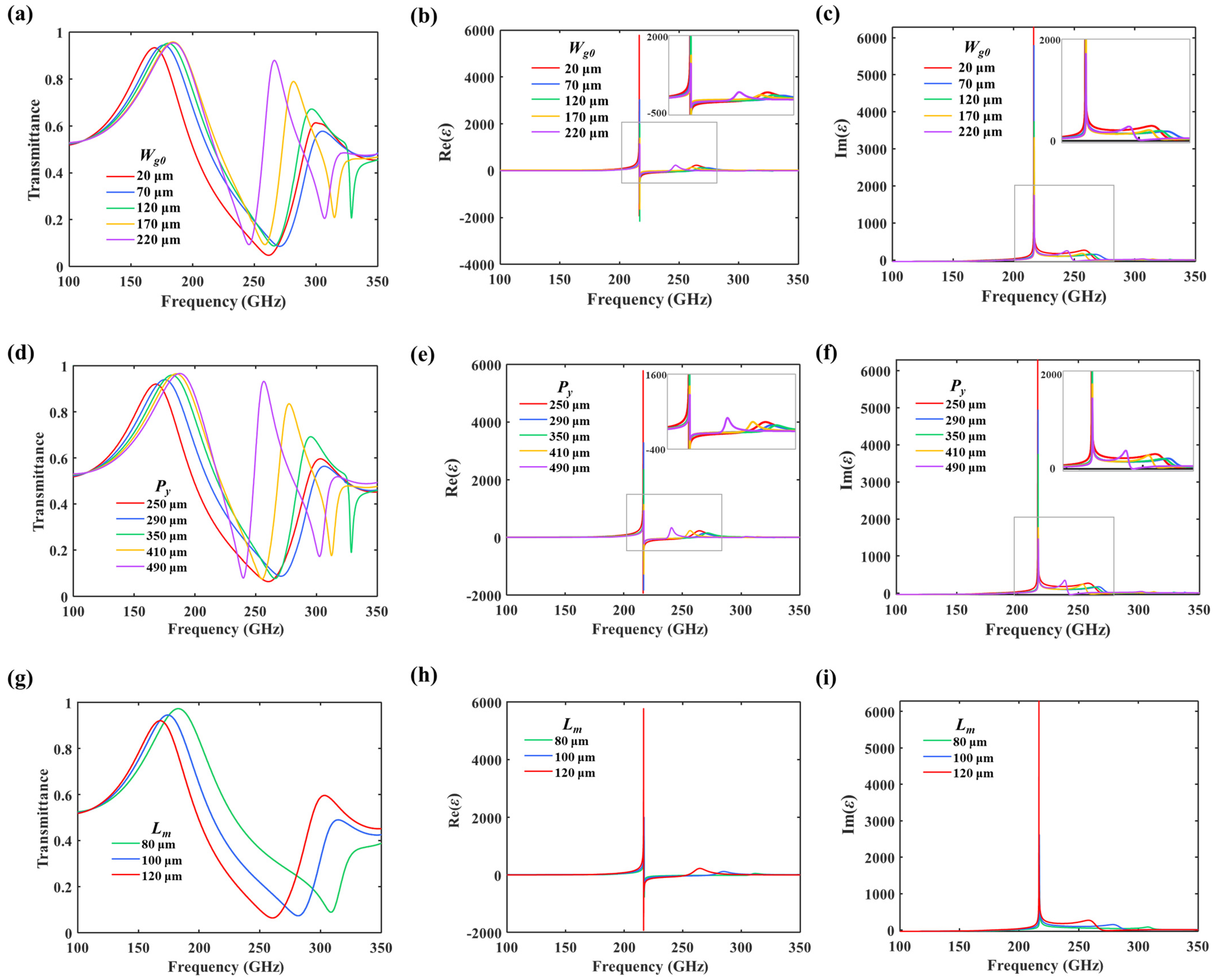
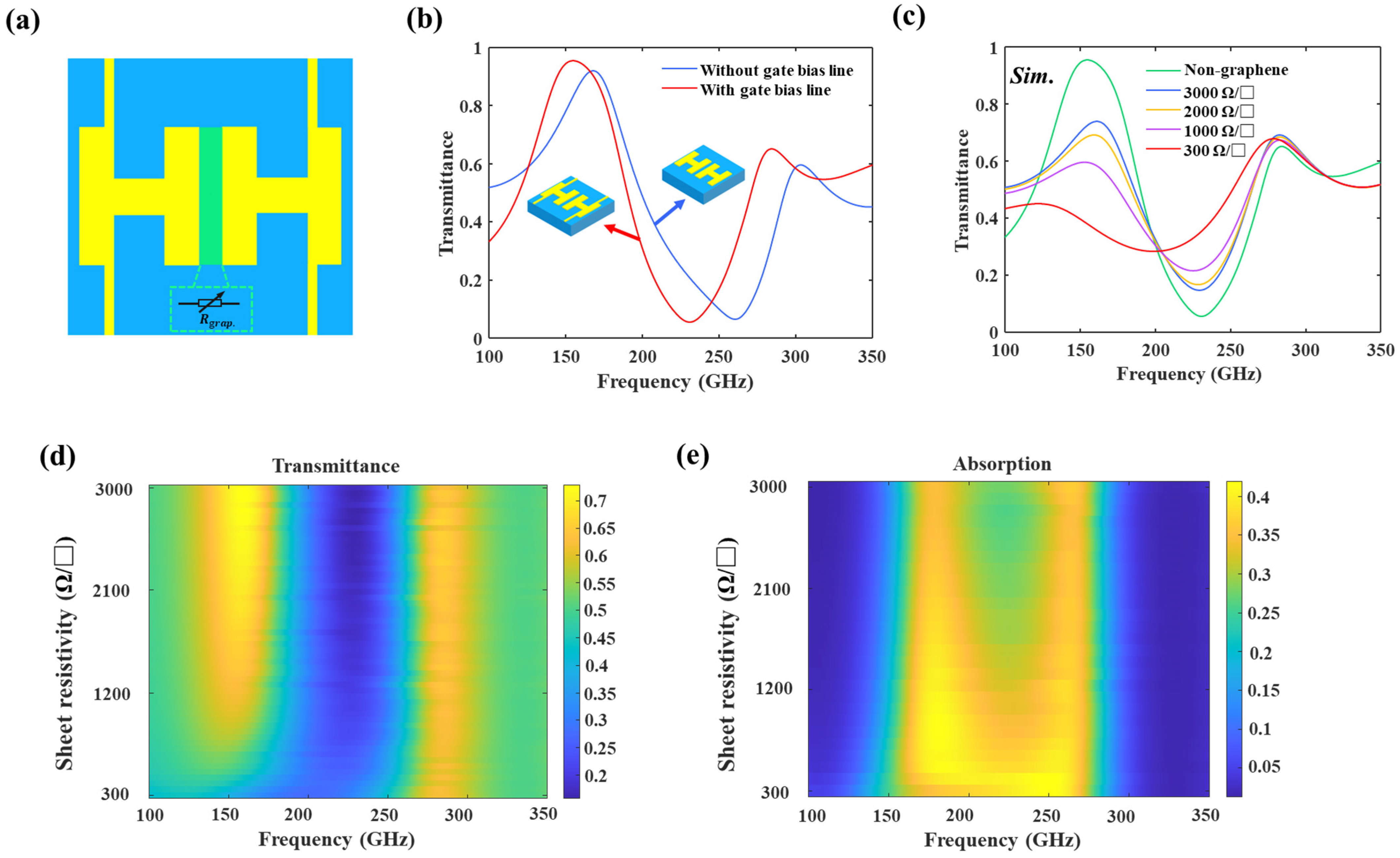
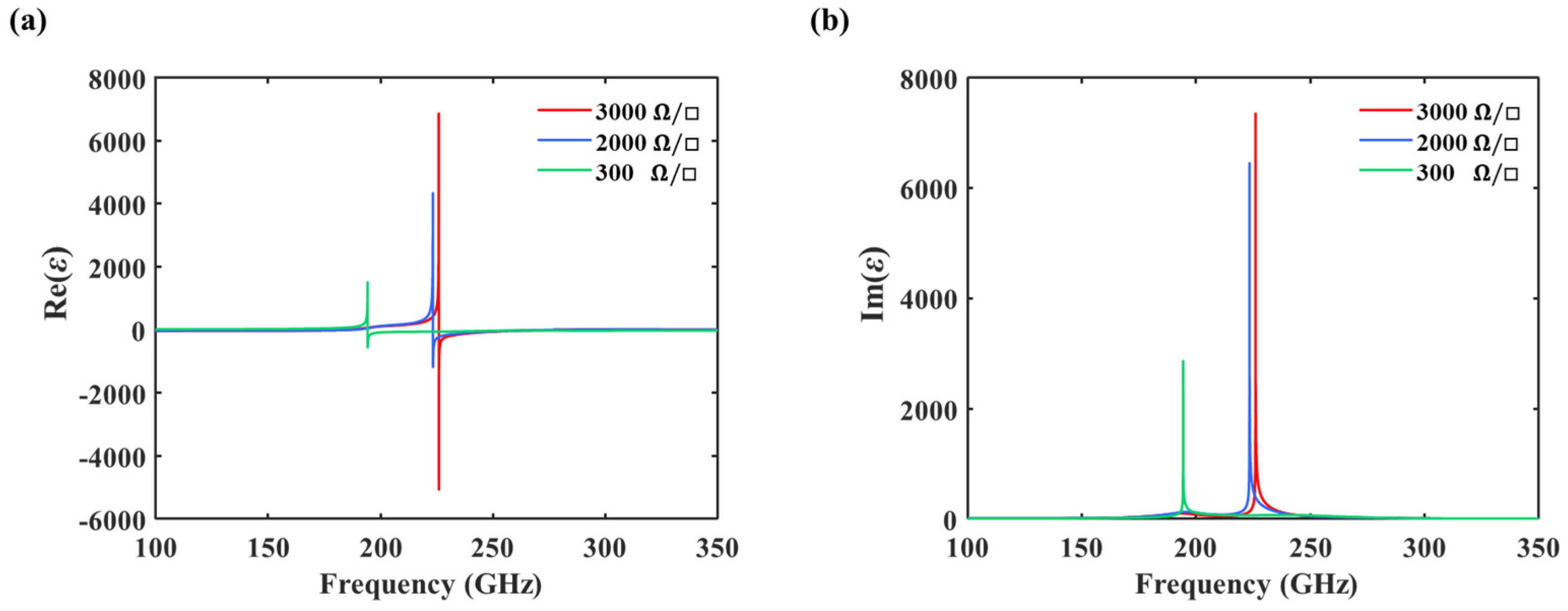
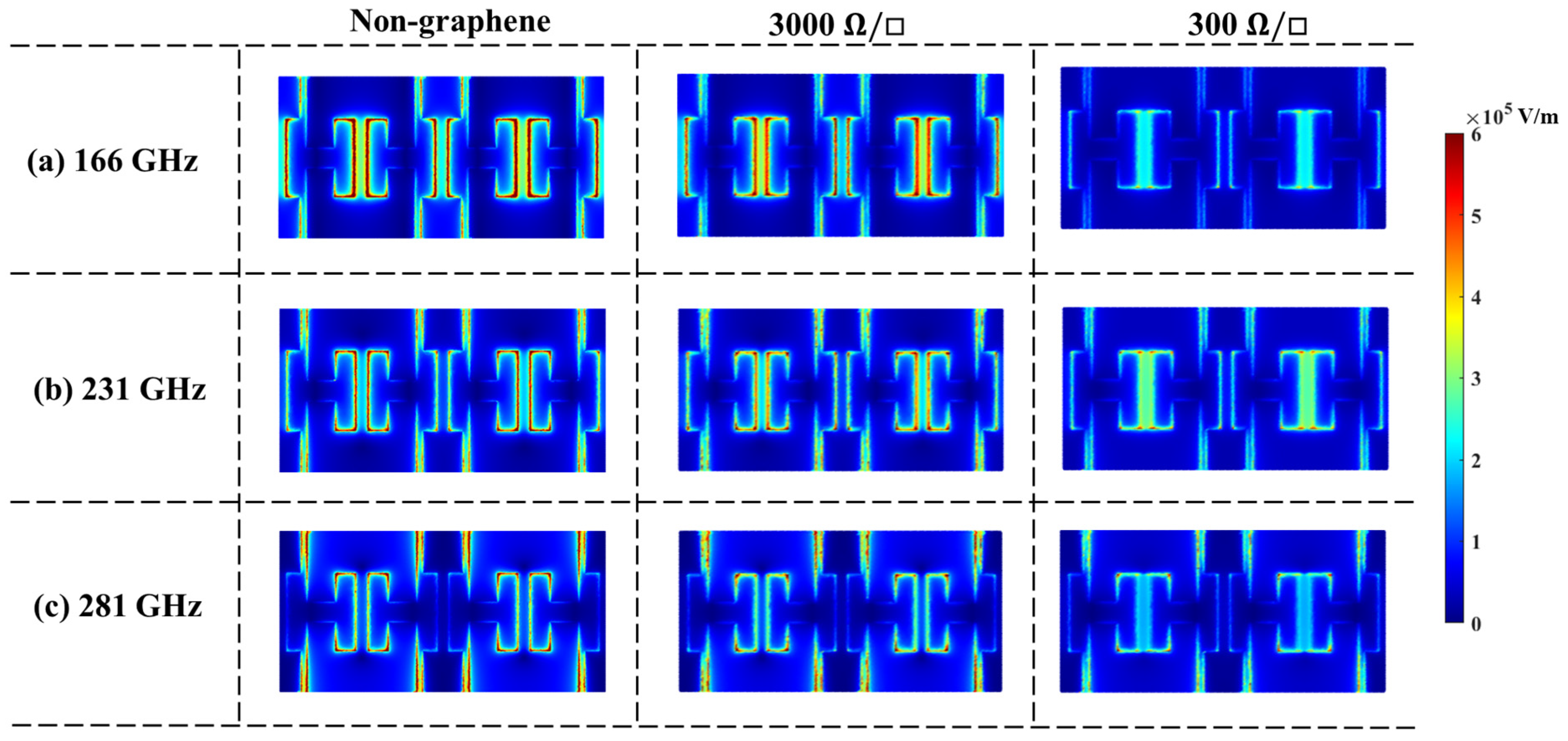
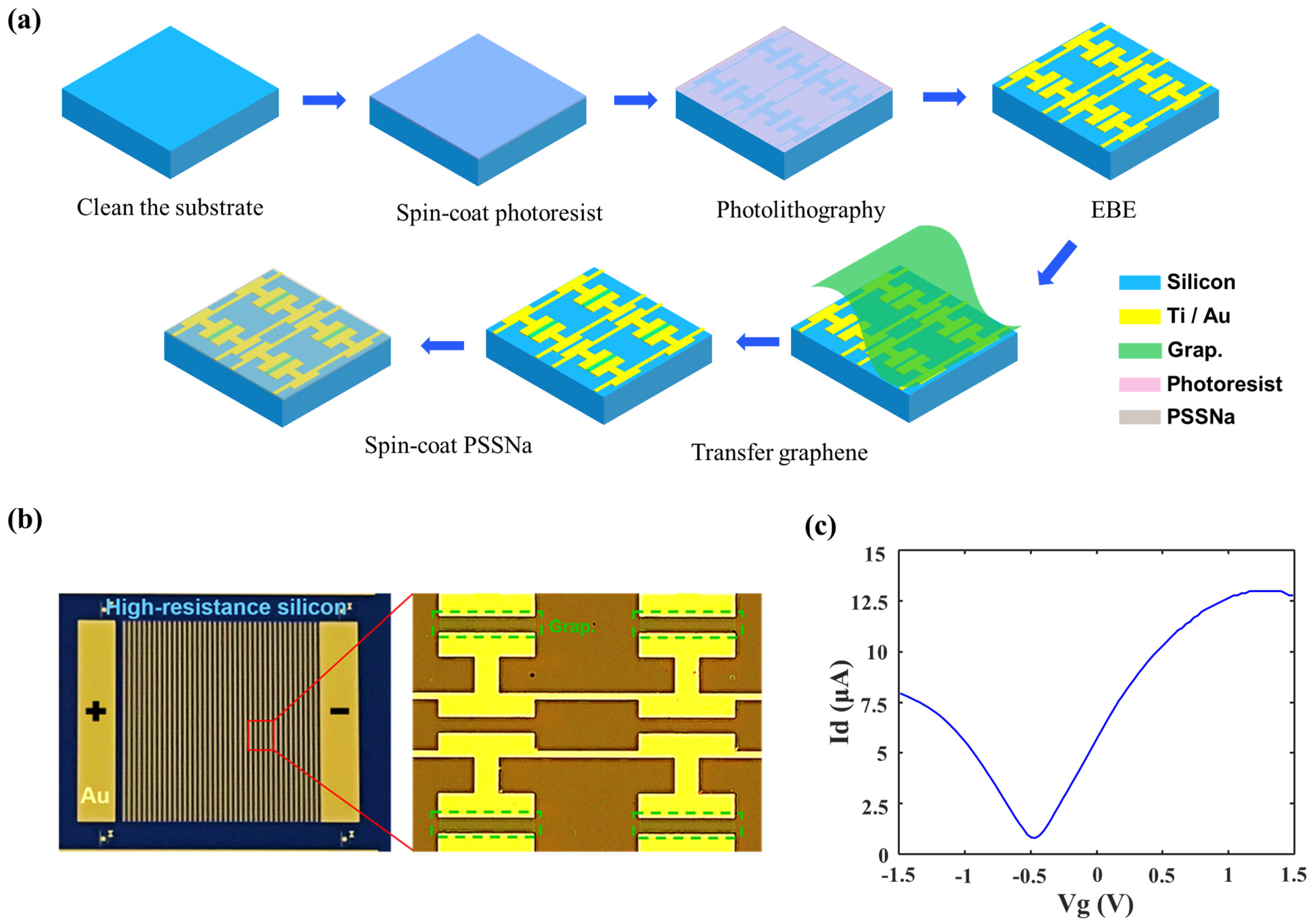
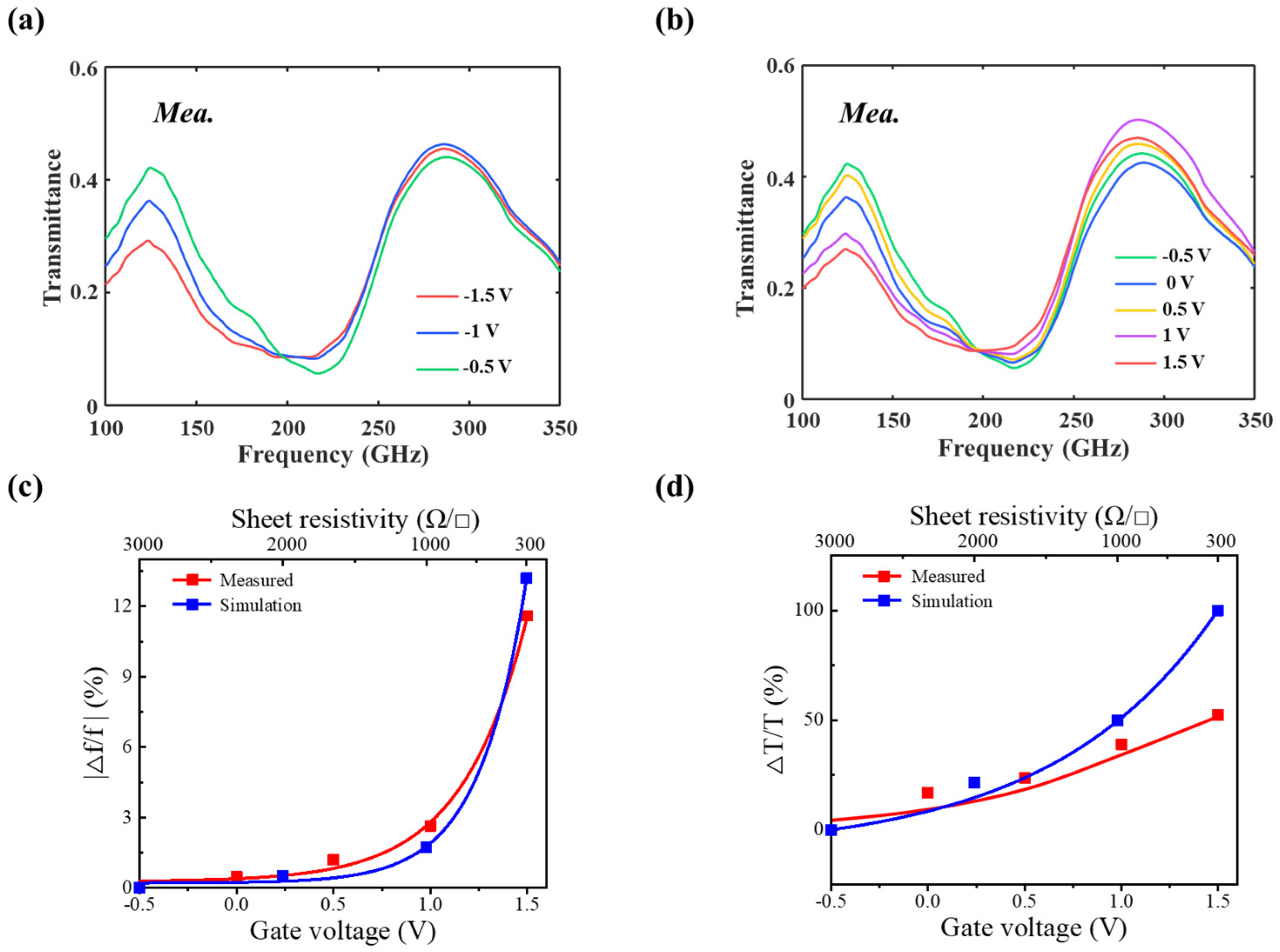
Disclaimer/Publisher’s Note: The statements, opinions and data contained in all publications are solely those of the individual author(s) and contributor(s) and not of MDPI and/or the editor(s). MDPI and/or the editor(s) disclaim responsibility for any injury to people or property resulting from any ideas, methods, instructions or products referred to in the content. |
© 2024 by the authors. Licensee MDPI, Basel, Switzerland. This article is an open access article distributed under the terms and conditions of the Creative Commons Attribution (CC BY) license (https://creativecommons.org/licenses/by/4.0/).
Share and Cite
Chen, K.; Li, K.; Wang, Y.; Zhang, Z.; Shi, Y.; Song, A.; Zhang, Y. Graphene-Tuned, Tightly Coupled Hybrid Plasmonic Meta-Atoms. Nanomaterials 2024, 14, 713. https://doi.org/10.3390/nano14080713
Chen K, Li K, Wang Y, Zhang Z, Shi Y, Song A, Zhang Y. Graphene-Tuned, Tightly Coupled Hybrid Plasmonic Meta-Atoms. Nanomaterials. 2024; 14(8):713. https://doi.org/10.3390/nano14080713
Chicago/Turabian StyleChen, Kai, Ke Li, Yiming Wang, Zihao Zhang, Yanpeng Shi, Aimin Song, and Yifei Zhang. 2024. "Graphene-Tuned, Tightly Coupled Hybrid Plasmonic Meta-Atoms" Nanomaterials 14, no. 8: 713. https://doi.org/10.3390/nano14080713
APA StyleChen, K., Li, K., Wang, Y., Zhang, Z., Shi, Y., Song, A., & Zhang, Y. (2024). Graphene-Tuned, Tightly Coupled Hybrid Plasmonic Meta-Atoms. Nanomaterials, 14(8), 713. https://doi.org/10.3390/nano14080713







